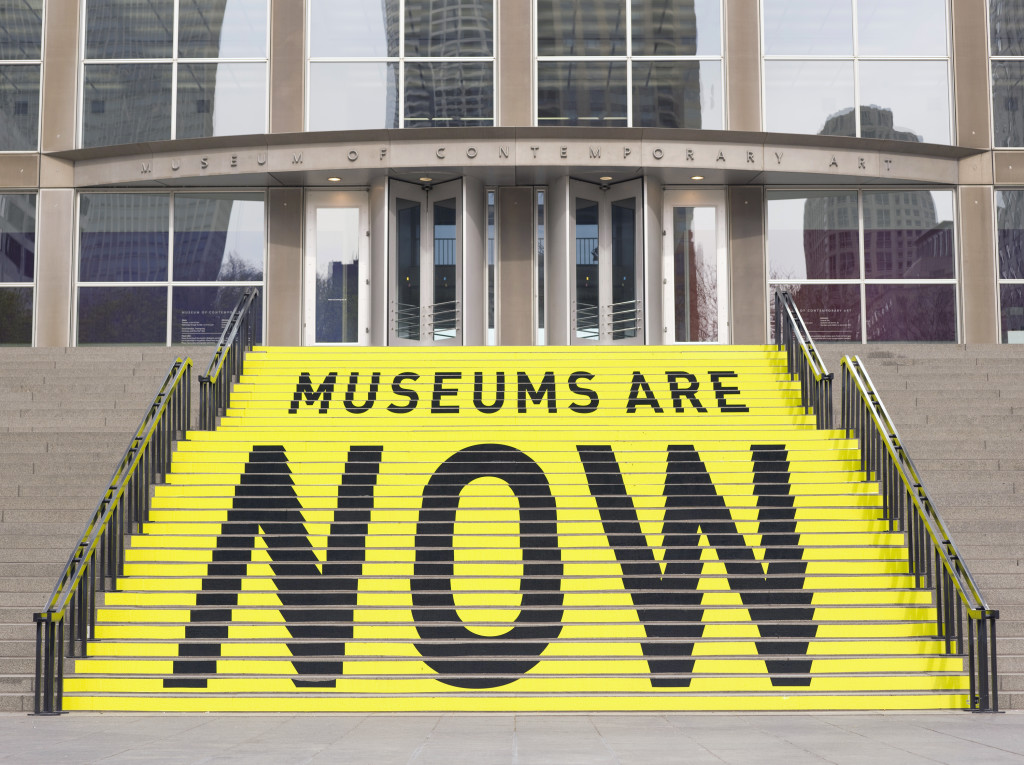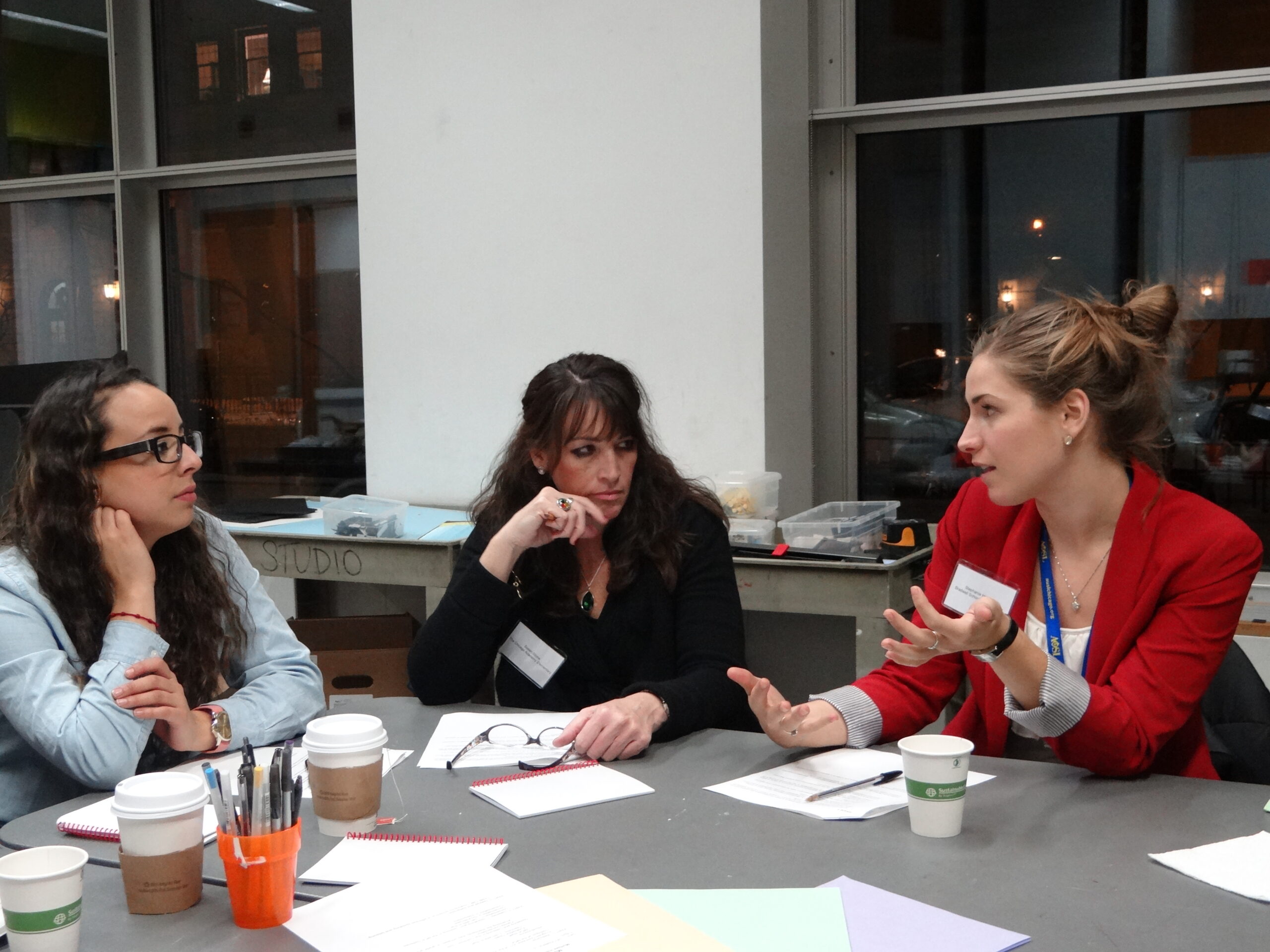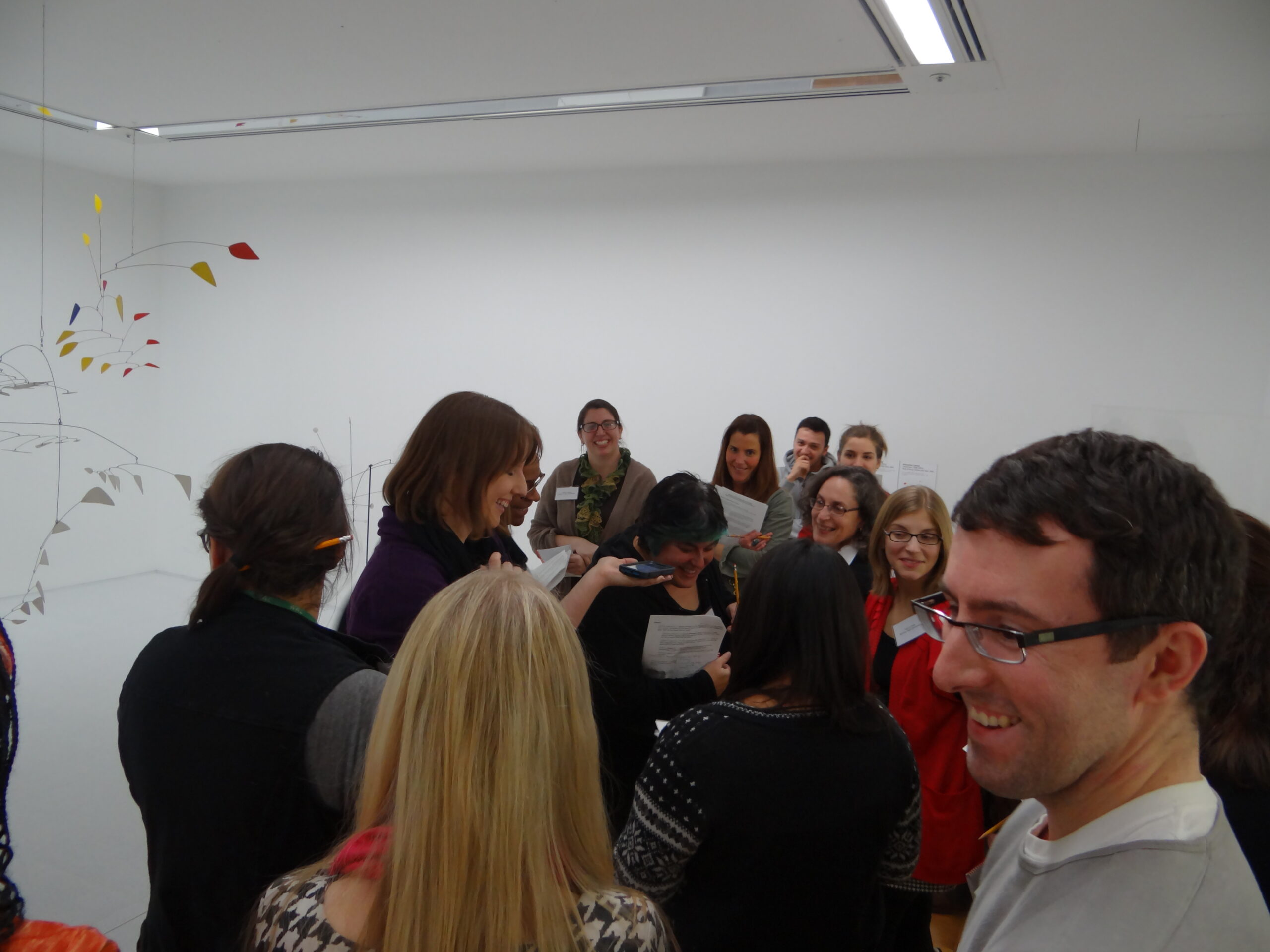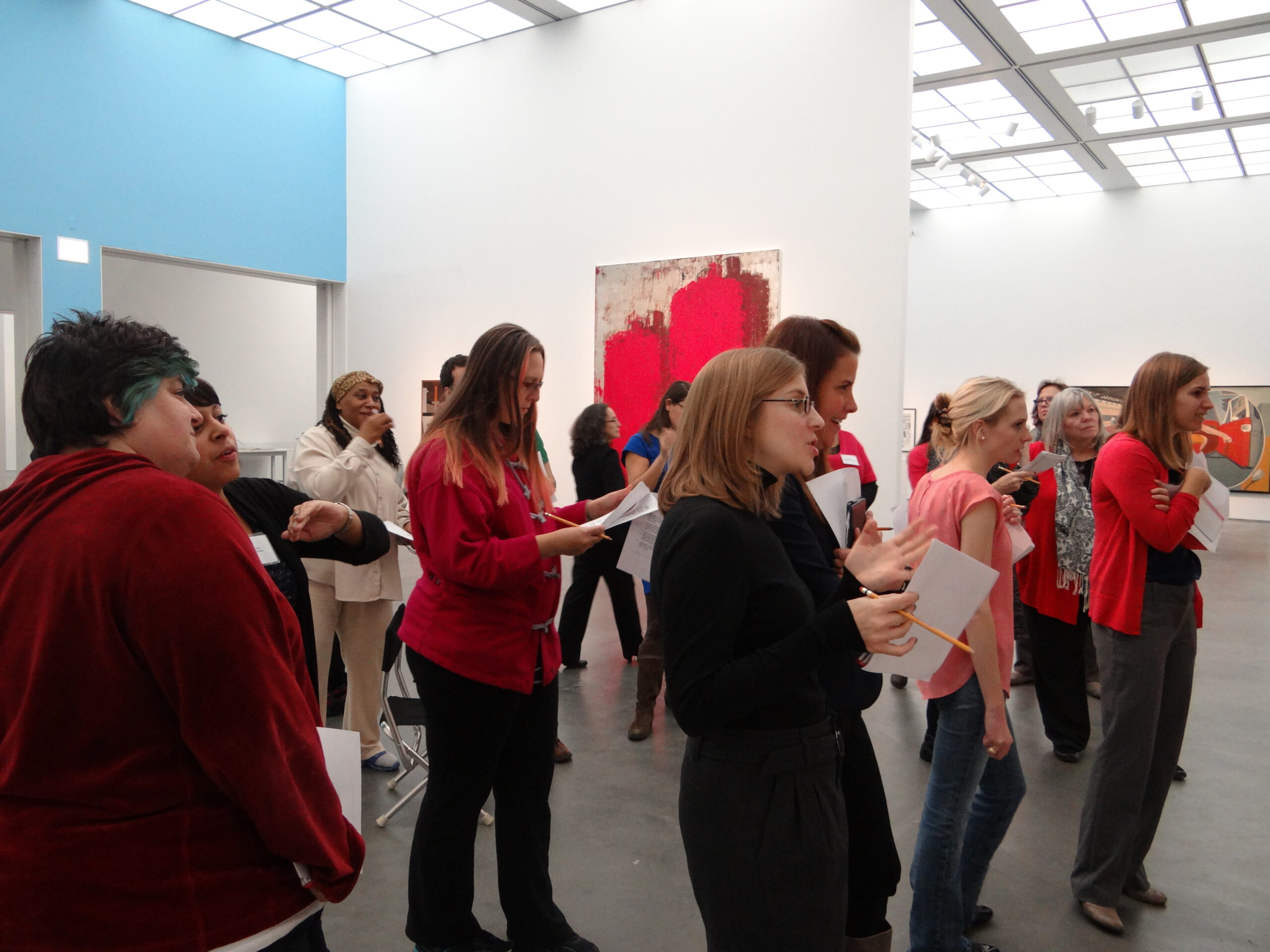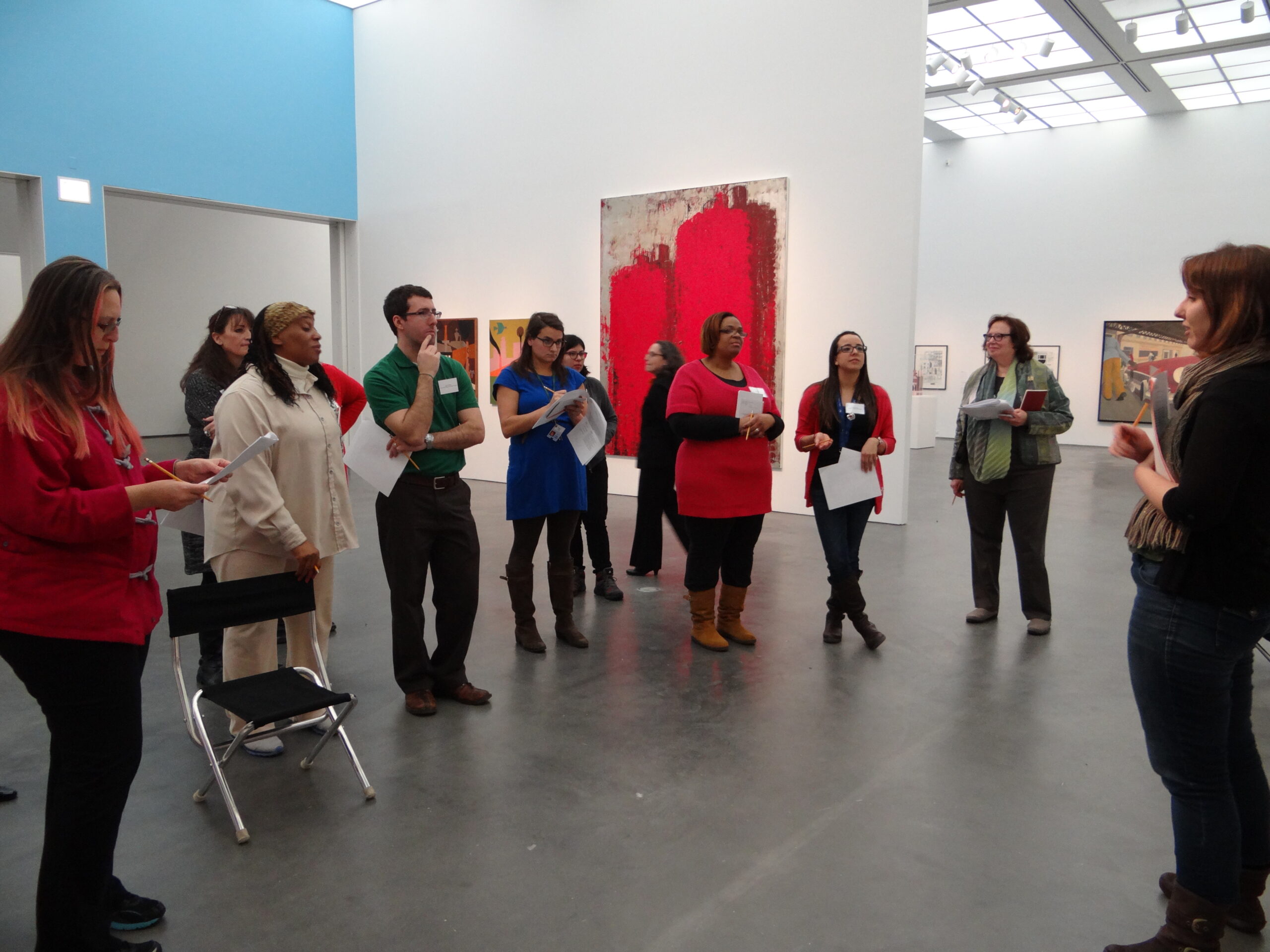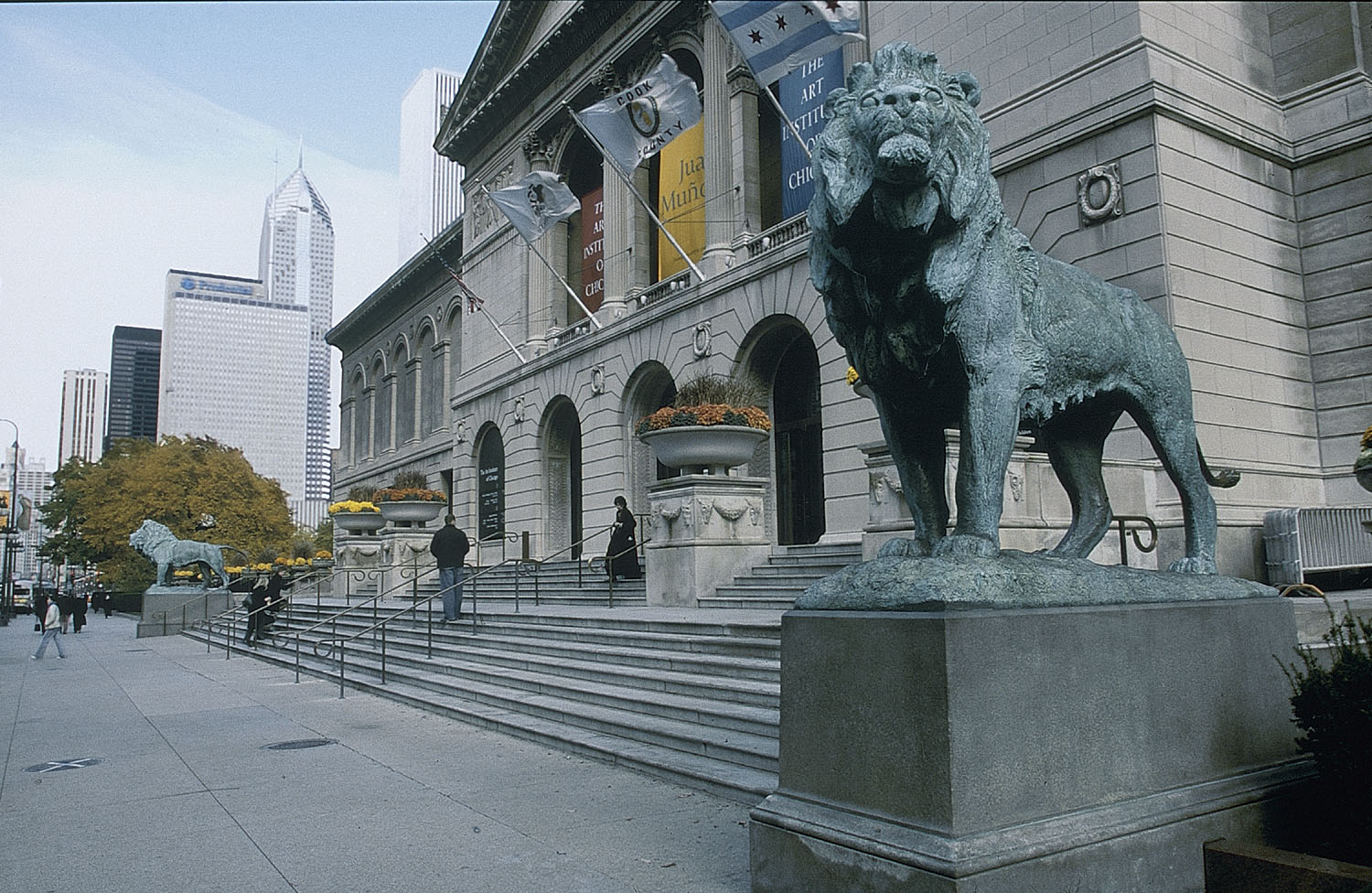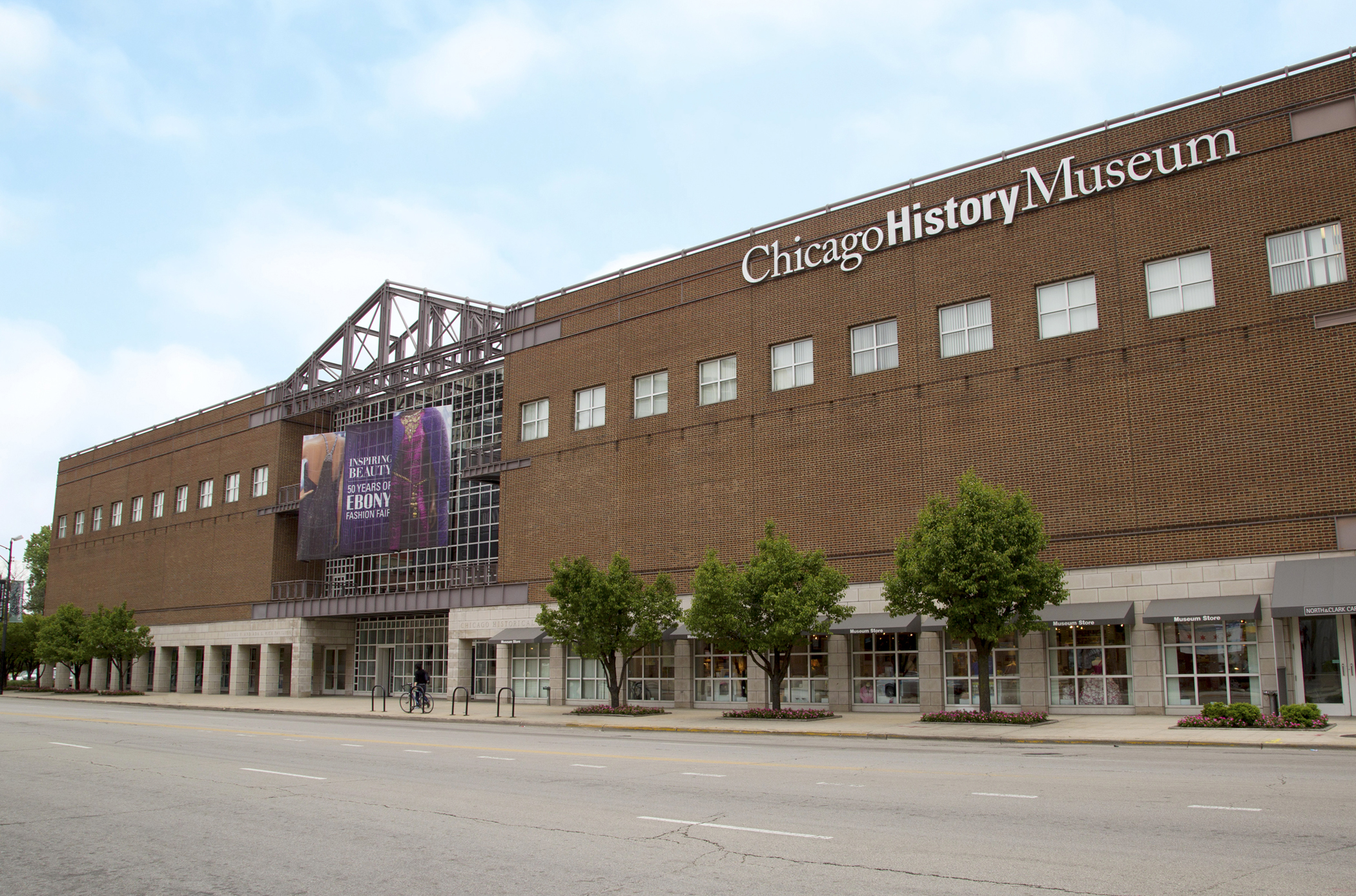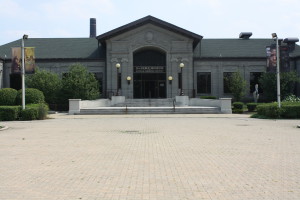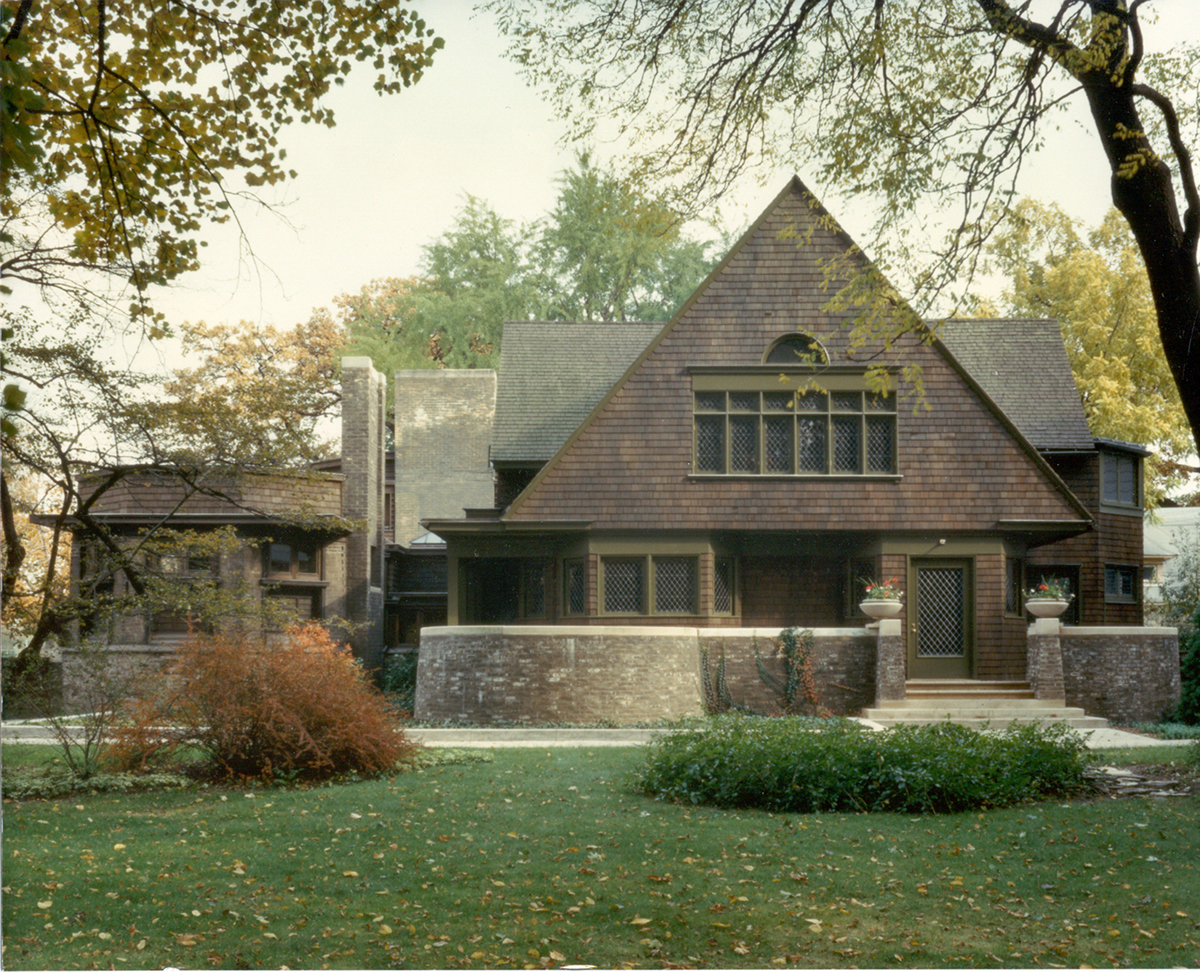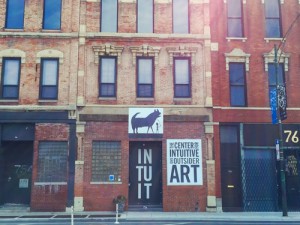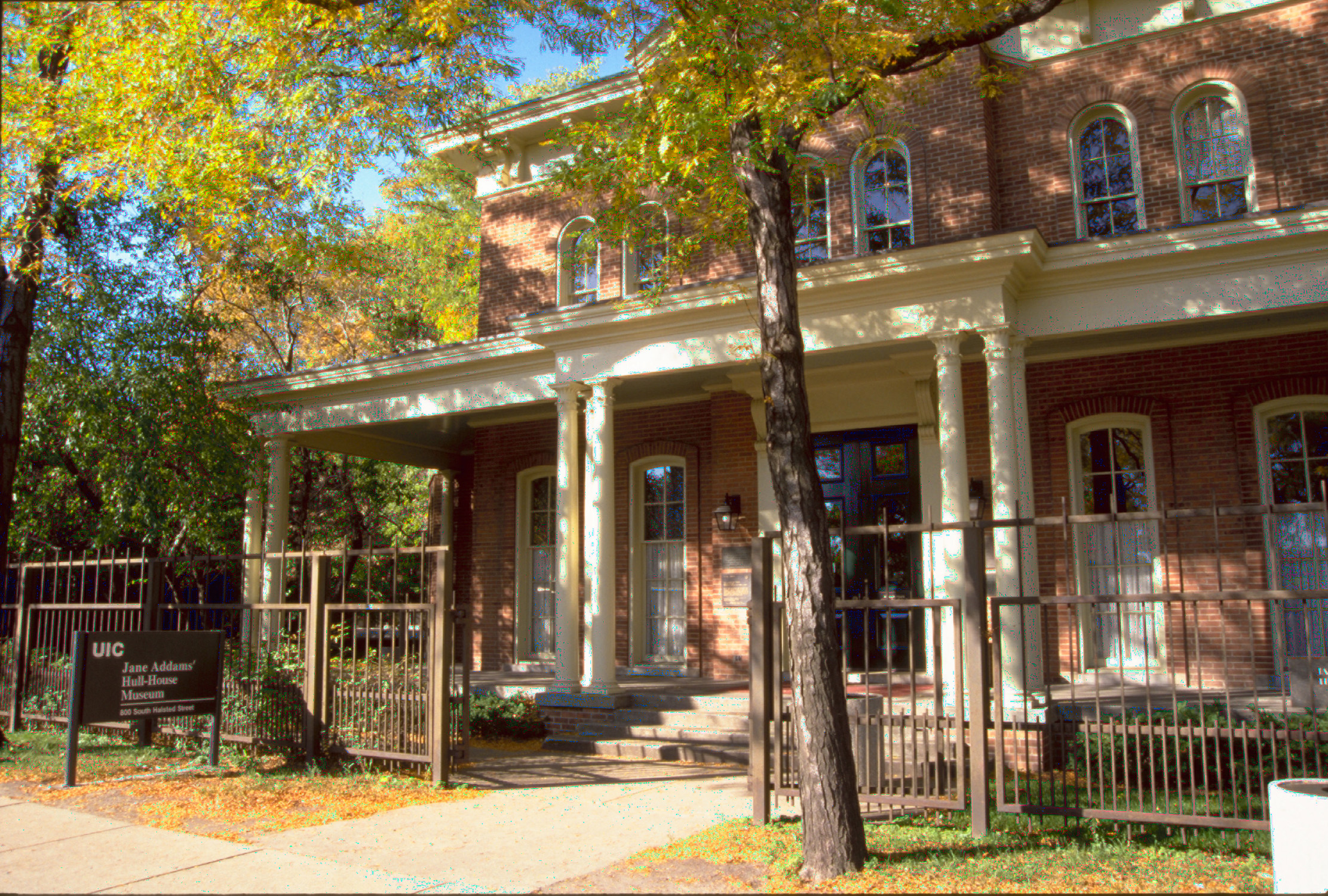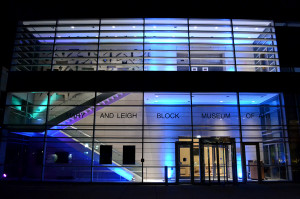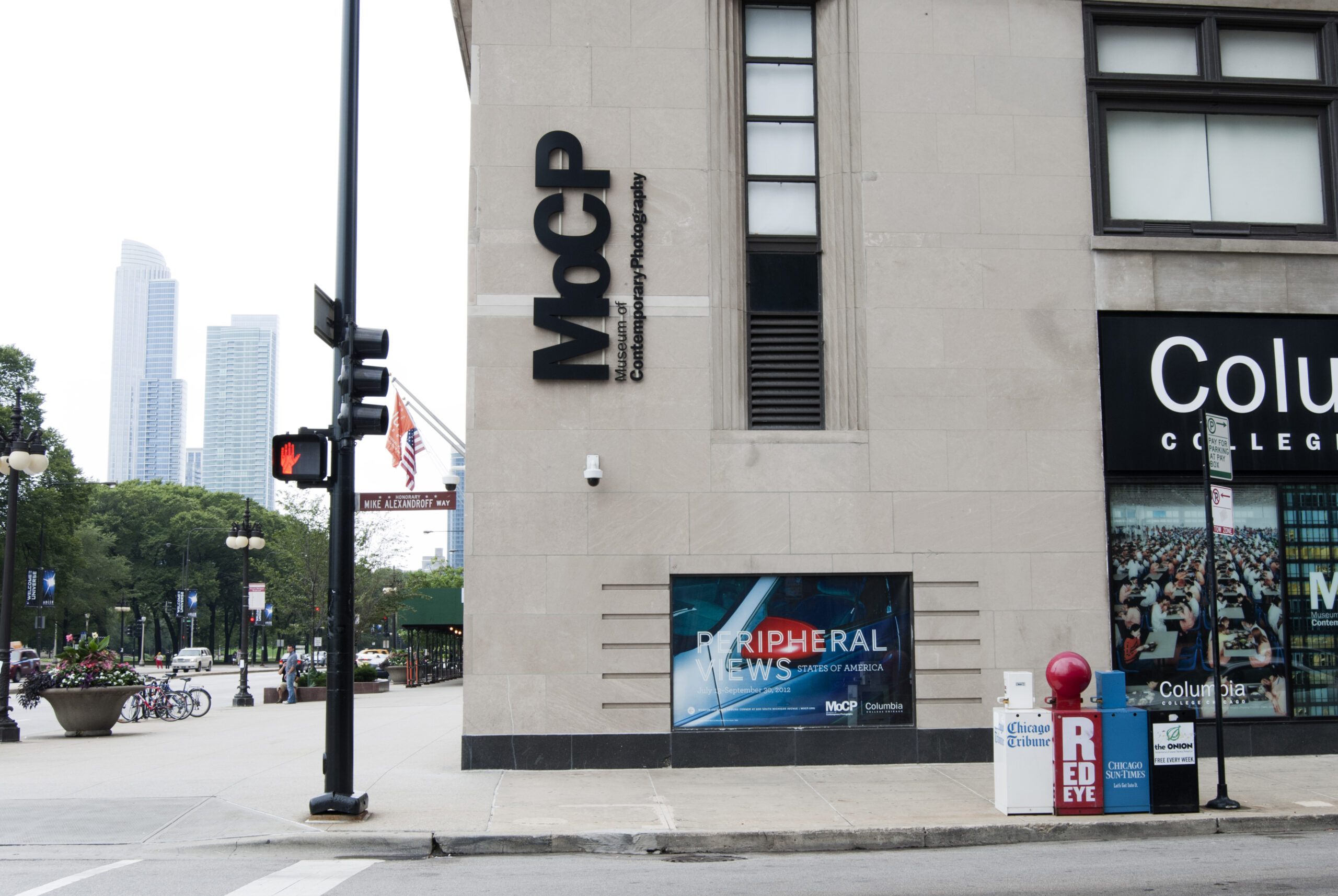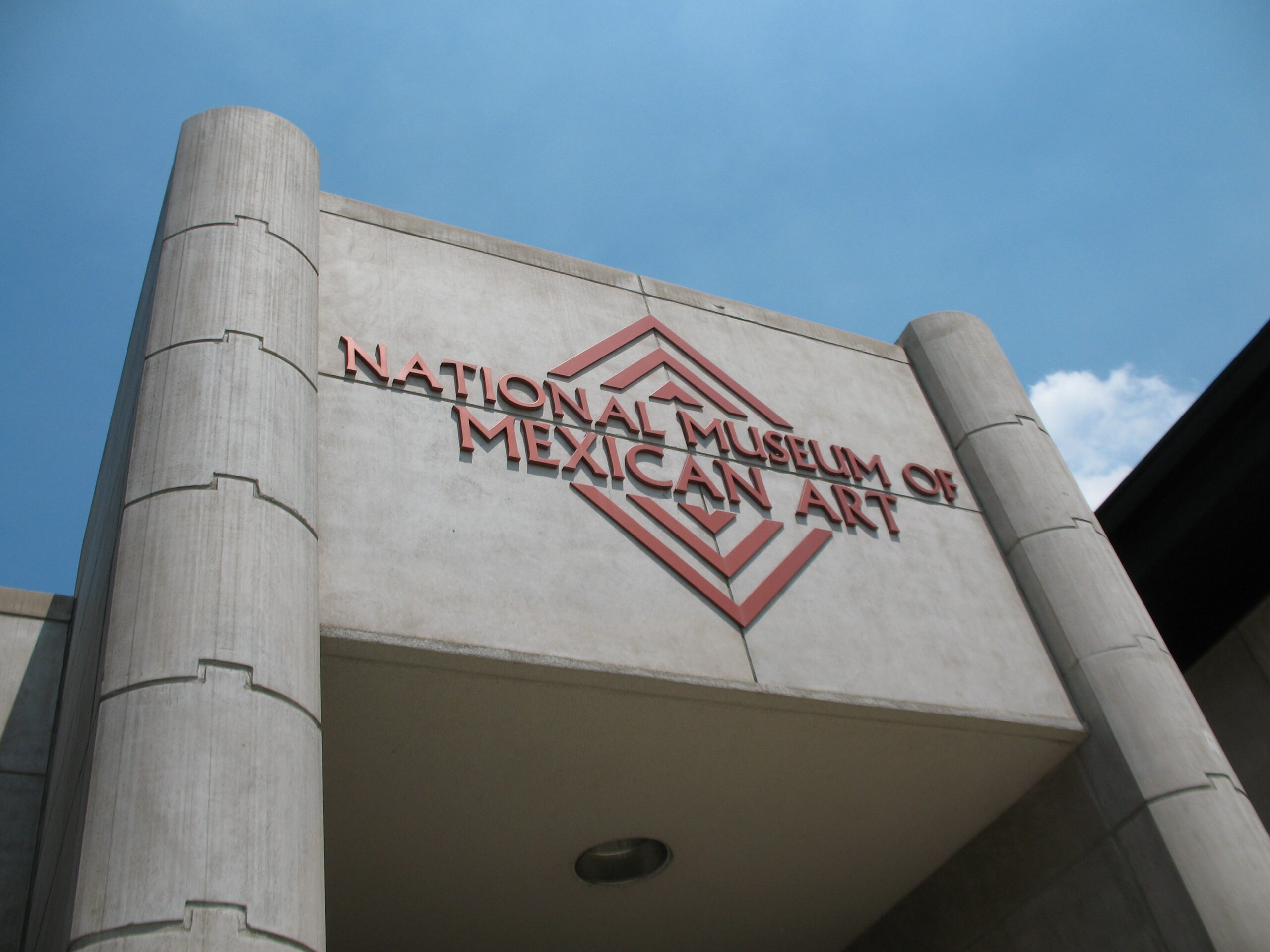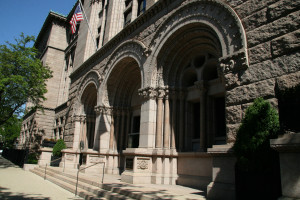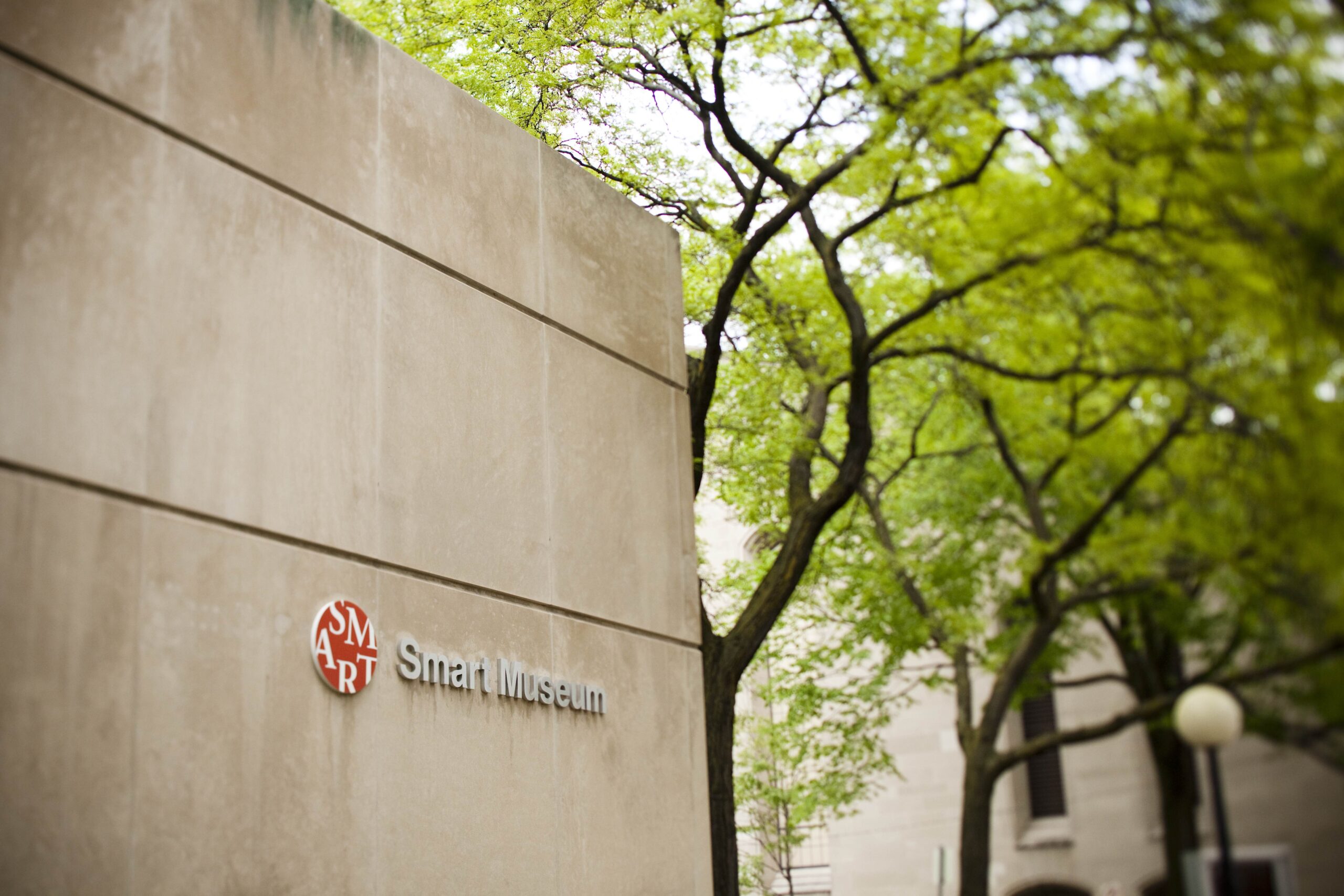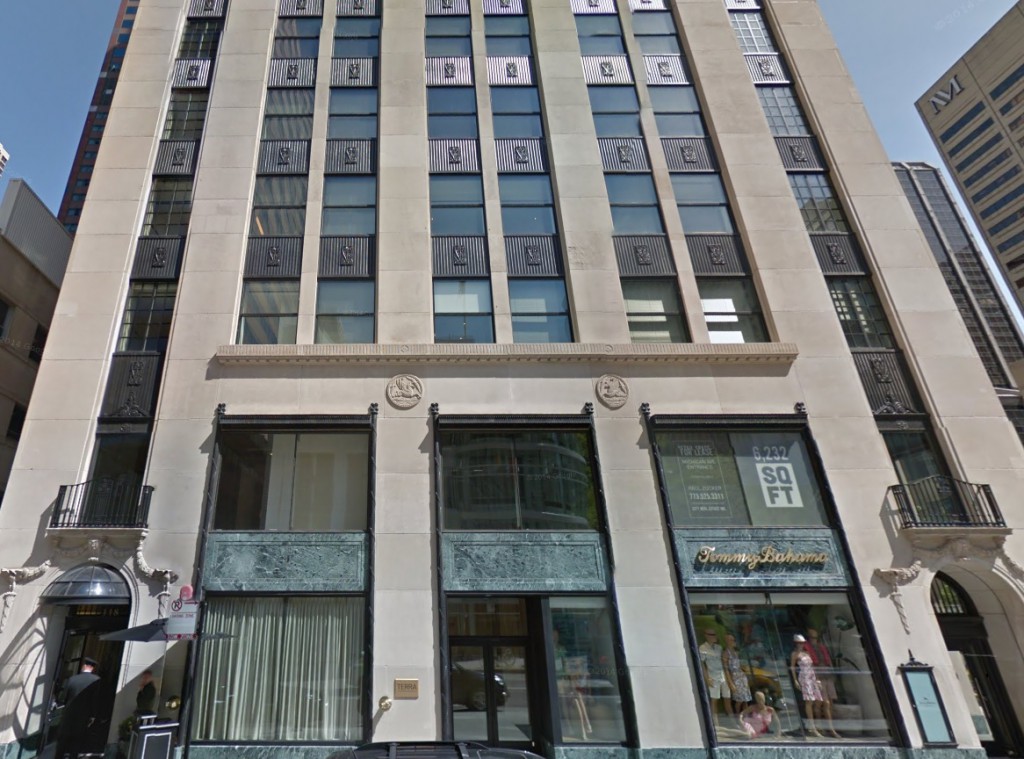220 East Chicago Avenue, Chicago IL 60647
Participating Staff:
- Marissa Reyes, Polk Bros. Associate Director of Education: School, Teacher, Family, and Youth Programs
- Lydia Ross, Programmer of Education: School and Teacher Programs
- Lauren Watkins, Programmer of Education: Family and Youth Programs
Multiple Visit Program
The MCA’s Multiple Visit Program brings the Common Core to life by offering students a chance to debate, discuss, and connect to works of art through multiple visits to the museum and teacher professional development. Designed in alignment with Common Core English Language Arts Standards, this program uses contemporary art and ideas to sharpen students’ critical thinking skills and abilities to engage in collaborative dialogue and inquiry. The program’s pilot year engaged twelve Chicago Public School classroom teachers—grades 3-5—and their students. Repeat visits enabled students to develop a sense of confidence and agency within the museum. The program consisted of two main parts: three teacher professional development sessions and three field trips to the MCA with the same group of students between January and April 2014. Tours were anchored by two MCA exhibitions: Warhol and Marisol and Alexander Calder. The Multiple Visit Program is an ongoing program, engaging a new group of students and teachers each year.
Key learning objectives
Student learning objectives:
- Use dialogue to apply developing observation abilities and emergent inquiry skills to the sustained examination of works of art.
- Effectively participate in a range of collaborative discussions – in pairs and in small and large groups –facilitated by MCA teaching artists; all the while building on others’ ideas and expressing their own.
- Learn to express an understanding of contemporary art – one that demonstrates an awareness of the diversity and eclecticism of the materials, concepts, and practices employed by artists of today; as well as relevance to their lived experience.
- Gain confidence in navigating the spaces of the museum.
CCSS connections
CCSS.ELA-Literacy.CCRA.SL.1 Prepare for and participate effectively in a range of conversations and collaborations with diverse partners, building on others’ ideas and expressing their own clearly and persuasively.
http://www.corestandards.org/ELA-Literacy/CCRA/SL/1/
CCSS.ELA-Literacy.CCRA.SL.2 Integrate and evaluate information presented in diverse media and formats, including visually, quantitatively, and orally.
http://www.corestandards.org/ELA-Literacy/CCRA/SL/2/
CCSS.ELA-Literacy.CCRA.SL.3 Evaluate a speaker’s point of view, reasoning, and use of evidence and rhetoric.
http://www.corestandards.org/ELA-Literacy/CCRA/SL/3/
How the program addresses the standards:
Three Common Core State Standards Speaking and Listening-aligned activities ground each of the three field trips to the MCA. Teachers observe and participate in these activities during the professional development sessions. By modeling the creative process of exploration, inquiry, and reflection, MCA Artist Guides—who lead all of our school programs and Multiple Visit Program tours—use contemporary art to expose students to new ideas and modes of thinking through activities designed specifically to address our Common Core focus.
Additionally, our Teacher Observation Protocol is directly informed by the language of the Common Core Speaking and Listening standards—crafted to match observable, measurable behavior in the galleries that address different elements of these standards. The Student Reflection Protocol —completed by each student directly following his/her MCA field trip—addresses these standards by asking students to recall information and determine main ideas and their importance.
What we learned
To assess the pilot year of the program, the MCA hired evaluation consultant Louanne Smolin, Ed D., with assistance from Della Leavitt, Ph D.
Methodology: The Multiple Visit Program (MVP) Evaluation used an Objectives-Oriented evaluation approach, which is particularly suited to determining and describing students’ development of speaking and listening skills over time, as well as the evolution of their understandings of contemporary art and the Museum of Contemporary Art as a source of learning. Importantly, participating teachers were involved in the co-construction, testing, and refinement of our assessment tools.
Study Participants: Twelve 3rd, 4th and 5th grade Chicago Public School teachers from eight schools, and 120 focal students (10 students from each class) of the approximately 300 students who attended the MVP program.
Evaluation Tools: Each of the twelve MVP Classroom Teachers completed a Teacher Observation Protocol during each of the three museum visits that was organized to monitor student behavior as it reflects Common Core Speaking and Listening Anchor Standards 1-3. This protocol asked teachers to rate the quality of student discussion and frequency of certain behaviors, analysis, and critique during the MCA’s Guided Tours. Students completed a Student Reflection Protocol following each visit to the museum, revealing insights and learning related to the tour experience.
KEY FINDINGS
Result 1: MVP deepened students’ critical thinking skills.
Over the course of our three visits, we saw with increasing frequency that students were:
- Reasoning about artists’ motivations
- Providing rationale for why a particular artwork or activity was important
- Forming coherent arguments, supported by evidence
- Posing critical questions
Result 2: MVP increased students’ collaborative discussion skills.
- From Visit 1 to Visit 3, students were increasingly building on one each other’s comments during the tour discussions. In written reflections, students increasingly referenced comments their peers had made and demonstrated an understanding of how others contributed to their own learning. For instance: “People have different stories or theories about art”. This “helped us to learn about different things”.
Result 3: MVP increased students’ content knowledge about elements of art, and awareness of the creative process.
- Students provided increasingly sophisticated interpretations of works of art, often through the use of metaphors, siting evidence from the work, and generating narratives.
- Students retained a great deal of factual information about art exhibits, ranging from labeling objects within an exhibit, recalling details such as titles of an exhibit or artists’ names, and topics or themes that a particular artist addressed in a work of art.
Result 4: MVP successfully bridges the MCA and the classroom in supporting teachers.
- Participants shared that the tools and techniques they acquired during this program will continue to shape their classroom teaching beyond this program, and greatly increased their confidence and skill set in serving as evaluators of their own students’ learning.
Quotes from participants
From teachers:
- “Thanks again for letting us join in this project. It’s really great. Right now our network has been meeting about changing the mindset of students and the way we praise them and encourage them to challenge themselves and one of the things we’ve been looking at is the speaking and listening standards in order to integrate new strategies for developing a growth mindset amongst the kids so [my fellow participating teacher] and I have definitely felt like we’re ahead of the game, having already delved into the specifics of the standards and having used the protocol sheet that was developed for this project.”
- “I explored how to become a better teacher and improve teaching and learning practices. Learned excellent ideas from the MCA leaders and other teachers. Became much more fluent [and] confident about teaching CC S&L. Sense of renewal and enthusiasm about teaching via contemporary art. Excitement about the possibilities of teaching and learning via contemporary art pieces.”
From students:
- “I remember…We played listening games with my group! It was really fun! We also saw cool art sculptures! Like really cool ones! I especially liked the fish pond! I really liked the lady who guided my class! And that game called “Is or Not” I loved! I liked learning new things!”
- “When we talked about [art], it helped us learn about others opinions and it let us reflect on our thoughts.”
- “I remember that we talked about lots of art words for example surreal, texture, 2-D, and 3-D. And [our guide] said that it is sometimes realistic. And that we talked about a sculpture about that man named Andy Warhall [sic]. We played a game called the listening game and we walked around the sculpture and talked about what it was NOT!
- This was important because the museum teaches you lots of art words and art material [sic].”
Sample materials
Download sample materials from this program here.

